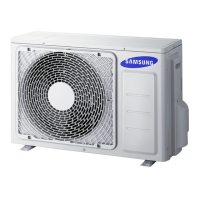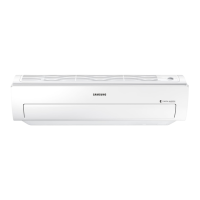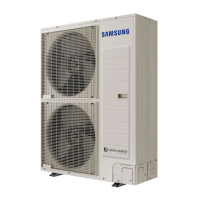What does E121 error mean on a Samsung AC035TNXDKG?
- RRobin StoneAug 31, 2025
If your Samsung Air Conditioner displays error E121, it indicates an error with the indoor temperature sensor, specifically a short or open circuit.

What does E121 error mean on a Samsung AC035TNXDKG?
If your Samsung Air Conditioner displays error E121, it indicates an error with the indoor temperature sensor, specifically a short or open circuit.
What does E181 error mean on a Samsung AC035TNXDKG?
If your Samsung Air Conditioner displays error E181, it indicates simultaneous opening of cooling/heating MCU SOL valve detected for the 2nd time.
What does E180 error mean on a Samsung AC035TNXDKG?
If your Samsung Air Conditioner displays error E180, it indicates simultaneous opening of cooling/heating MCU SOL valve detected for the 1st time.
What does E403 error mean on a Samsung AC035TNXDKG?
If your Samsung Air Conditioner displays error E403, it means the compressor stopped due to freeze detection, detected for the 6th time.
What does E451 error mean on a Samsung AC035TNXDKG Air Conditioner?
If your Samsung Air Conditioner displays error E451, it indicates a low pressure s/w, detected for the second time.
What does E416 error mean on a Samsung AC035TNXDKG Air Conditioner?
If your Samsung Air Conditioner displays error E416, it indicates an abnormally high temperature on the discharged air of the outdoor unit, detected for the second time.
What does E554 error mean on a Samsung AC035TNXDKG?
If your Samsung Air Conditioner displays error E554, it indicates refrigerant leakage, detected for the second time.
What does E450 error mean on a Samsung AC035TNXDKG Air Conditioner?
If your Samsung Air Conditioner shows error code E450, it indicates an abnormally high temperature on the Cond, detected for the second time.
| Brand | Samsung |
|---|---|
| Model | AC035TNXDKG |
| Category | Air Conditioner |
| Language | English |
Defines WARNING, CAUTION, IMPORTANT, and NOTE symbols for safety messages.
Covers electrical safety, proper installation location, and avoiding hazards during installation.
Outlines safety rules for operating the air conditioner, including handling malfunctions and gas leaks.
Details safe procedures for cleaning the appliance, emphasizing power disconnection and avoiding hazardous chemicals.
Explains how to select and use different operating modes like Auto, Cool, Dry, Fan, and Heat.
Guides users on adjusting the temperature settings and fan speeds for optimal comfort.
Describes the Wind-Free cooling mode for a mild, draft-free cooling experience.
Addresses problems like the unit not working, temperature control issues, and airflow problems.
Solutions for remote control malfunctions, blinking indicators, and timed function errors.











